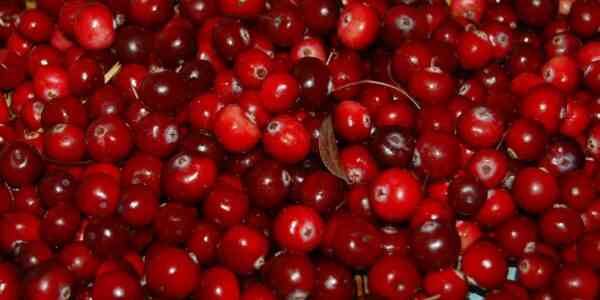Delicious and healthy cranberries grow only in temperate climates, although some of its varieties successfully survive even in the tundra. Many of us have probably had occasion to collect it in the fall, and at these moments there is always a temptation to eat a delicious berry, and not put it in a basket. But in fact, if desired, cranberries can be stored in the freezer for quite a long time, since they practically do not lose nutrients and taste. And the jam from it turns out just great!
Interesting facts about cranberries
- This plant grows only in the Northern Hemisphere of the Earth.
- In height, it does not exceed 25-30 centimeters. Cranberries prefer not to reach up, but to creep along the ground.
- It is sometimes called “bear berry”, since brown bears really like cranberries (interesting facts about brown bears).
- If you soak cranberries in sugar syrup for the winter, they will not spoil.
- Cranberries are almost 90% water.
- Each year, one small cranberry bush produces 200-300 berries
- You can check the ripeness of cranberries in this way: throw it on a hard surface, if it bounces, then the berries are ripe.
- Cranberries grow in extremely humid places – for example, in swamps and wet lake shores. Often found next to lingonberries
- Cranberry juice protects against urinary tract infections. It prevents E. coli from sticking to the walls of the bladder and removes them with urine.
- In 1994, the cranberry was named the official berry of the state of Massachusetts (USA).
- Some cranberry bushes are already over 100 years.
- Birch and flowering cranberries adorn the coat of arms of a commune in Switzerland called Besenbüren (interesting facts about Switzerland).
- Cranberries are exceptionally healthy due to their high concentration of vitamins C, B, PP and K1. In terms of the amount of these substances, cranberries are not inferior to citrus fruits, cabbage and strawberries. Berries also contain a large supply of potassium, phosphorus, calcium, iron, iodine and magnesium.
- The generic name of cranberry comes from the Greek words “oxis” – sharp, sour and “coccus” – spherical.
- Drinking sour cranberry juice, you can get rid of depression and stress.
- If you grabbed cranberries frost, berries should also be stored frozen after picking.
- It is customary to pick cranberries twice a year – in the fall and with the onset of frost right before the start of winter.
- For the first time, cranberry juice was canned in 1912.
- Cranberries have been scientifically proven to be anti-inflammatory and protect against stress or depression.
- In the USA and Canada, large-fruited cranberries are grown, which do not sink in water due to the presence of air chambers in the berries. This is one of the few berries that can float on water. Before harvest, plantations are flooded, the berries float to the surface, and they can be easily harvested using special machines (interesting facts about Canada).
- Cranberries are used in medicine as a cure for scurvy, sore throat, colds, urinary infections ways, rheumatism and beriberi.
- American Indians prepared the so-called “pemmican” – a mixture of crushed cranberries, dried meat and nuts.
- For medical purposes, ripe berries are used, collected after the onset of frost in autumn or early spring. Cranberries harvested in spring are tastier than autumn cranberries, they accumulate a lot of citric acid, but almost no vitamins remain.
- Berries harvested in September ripen and soften during storage.
